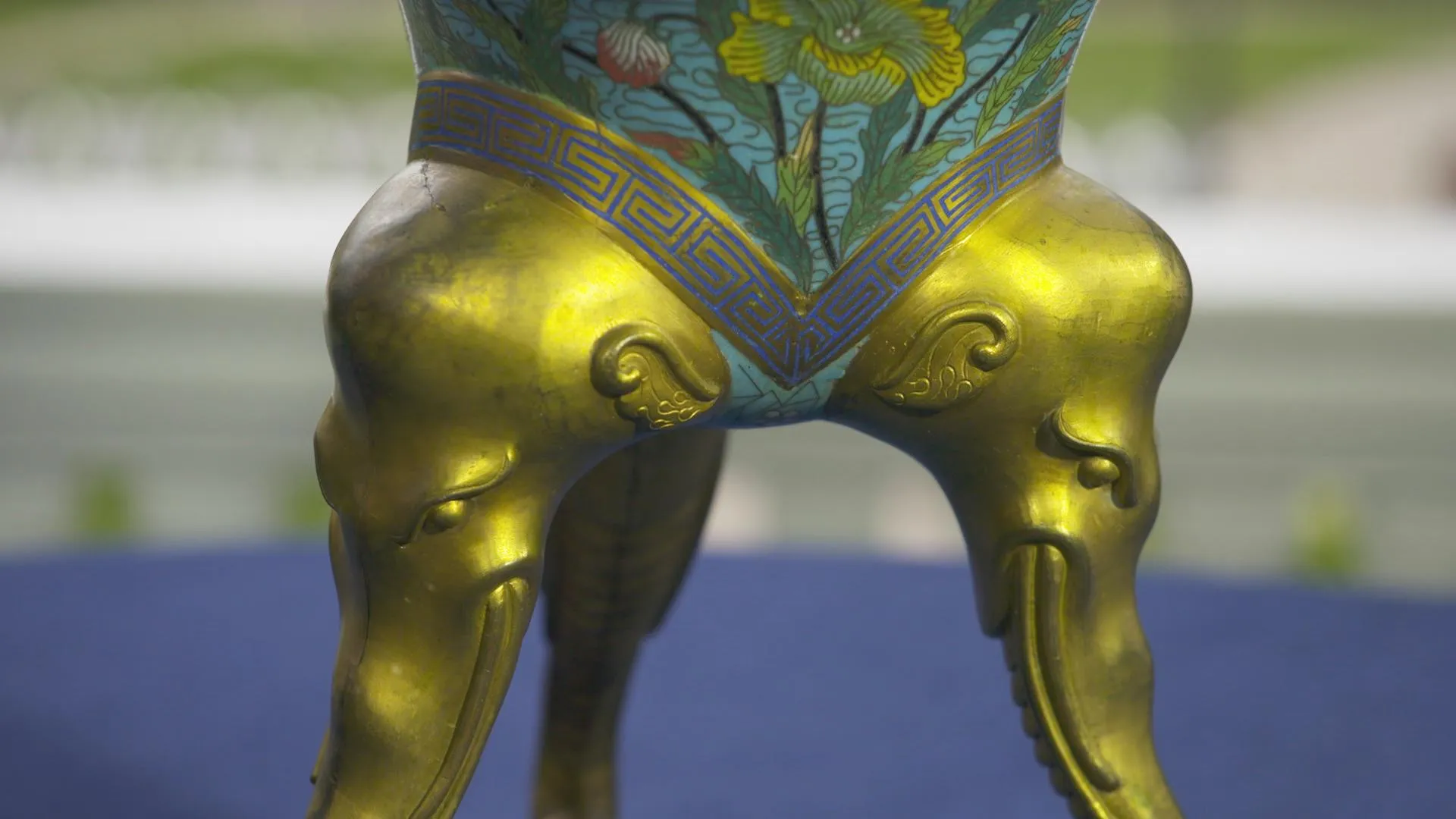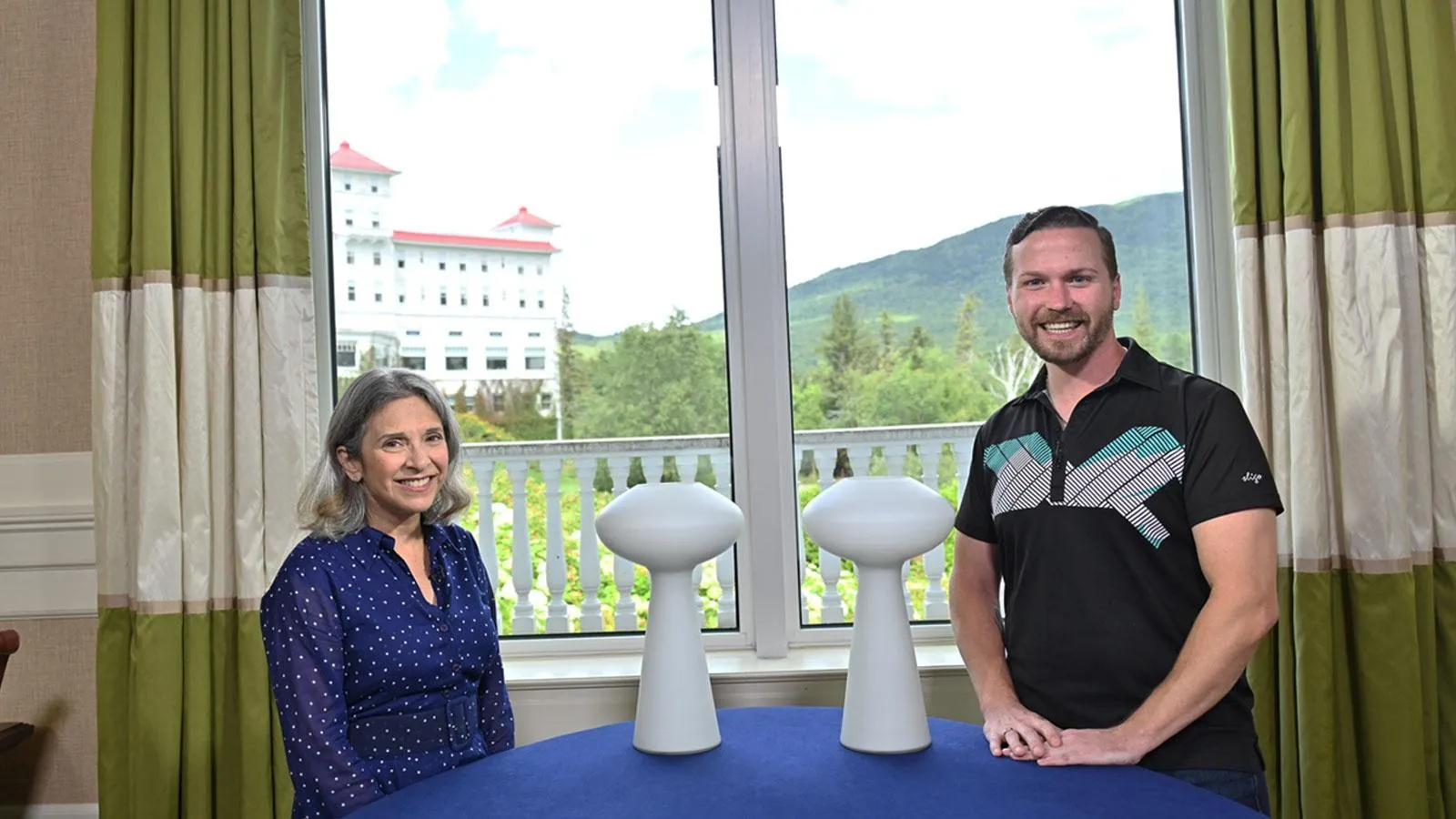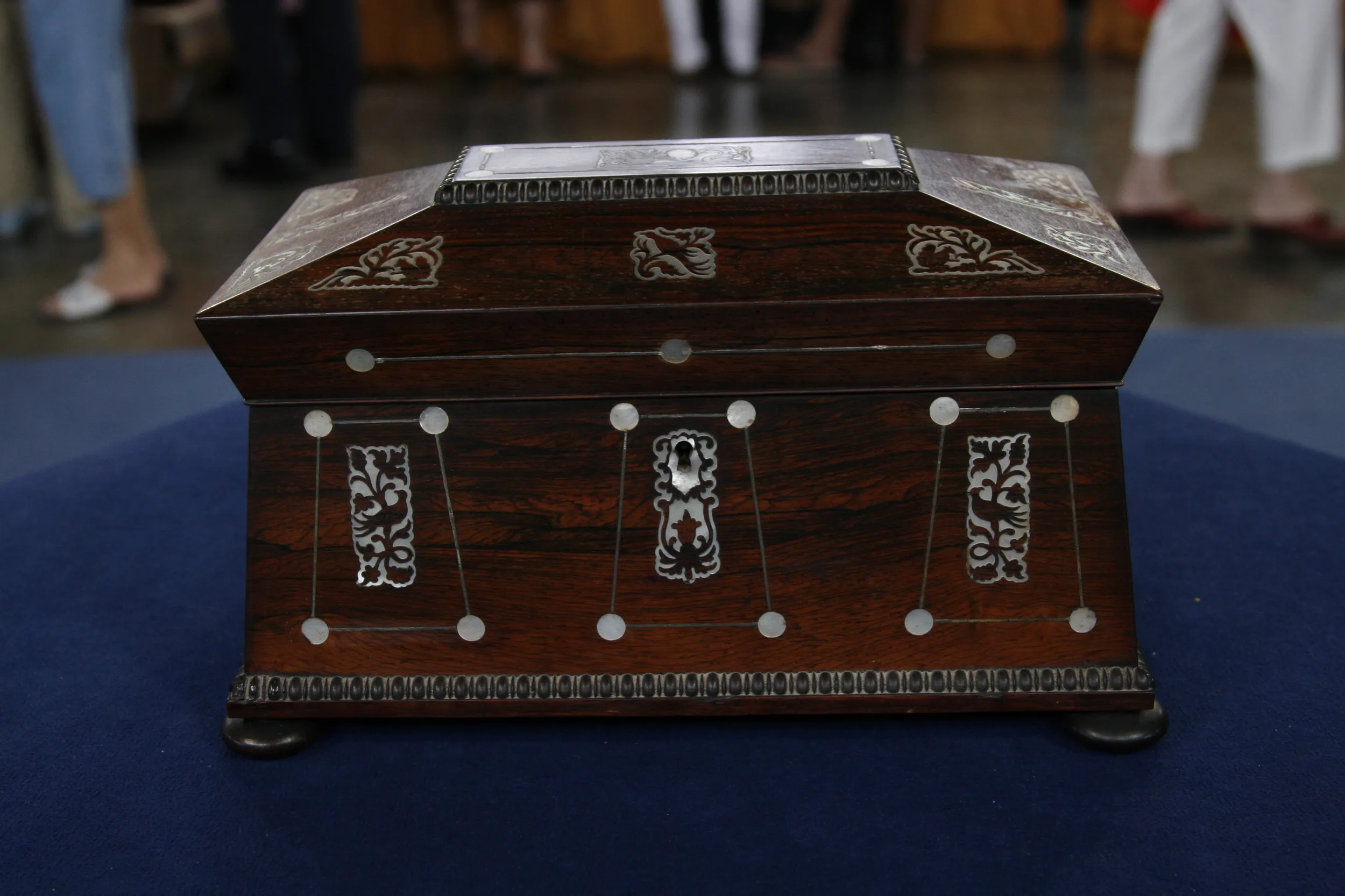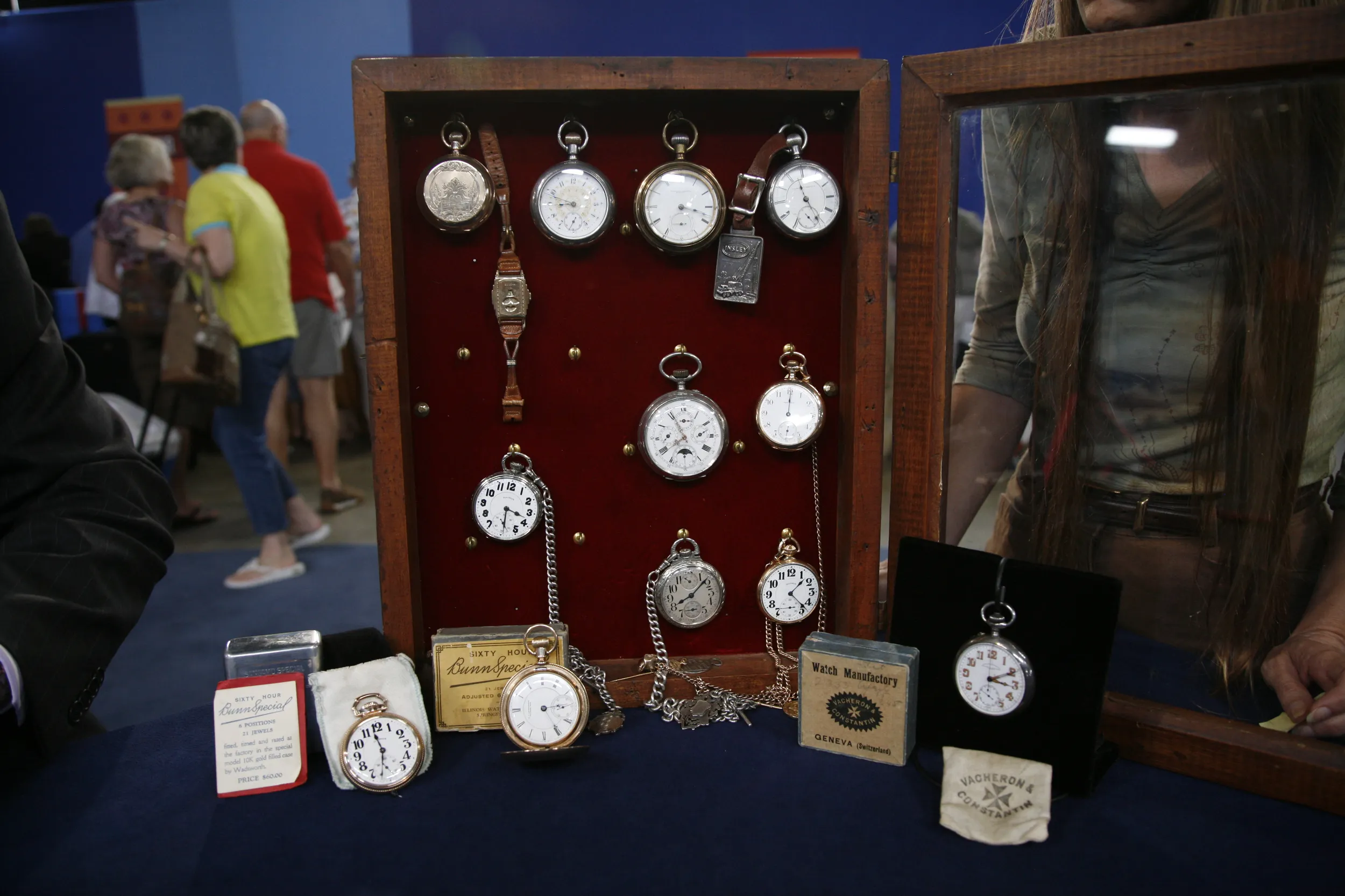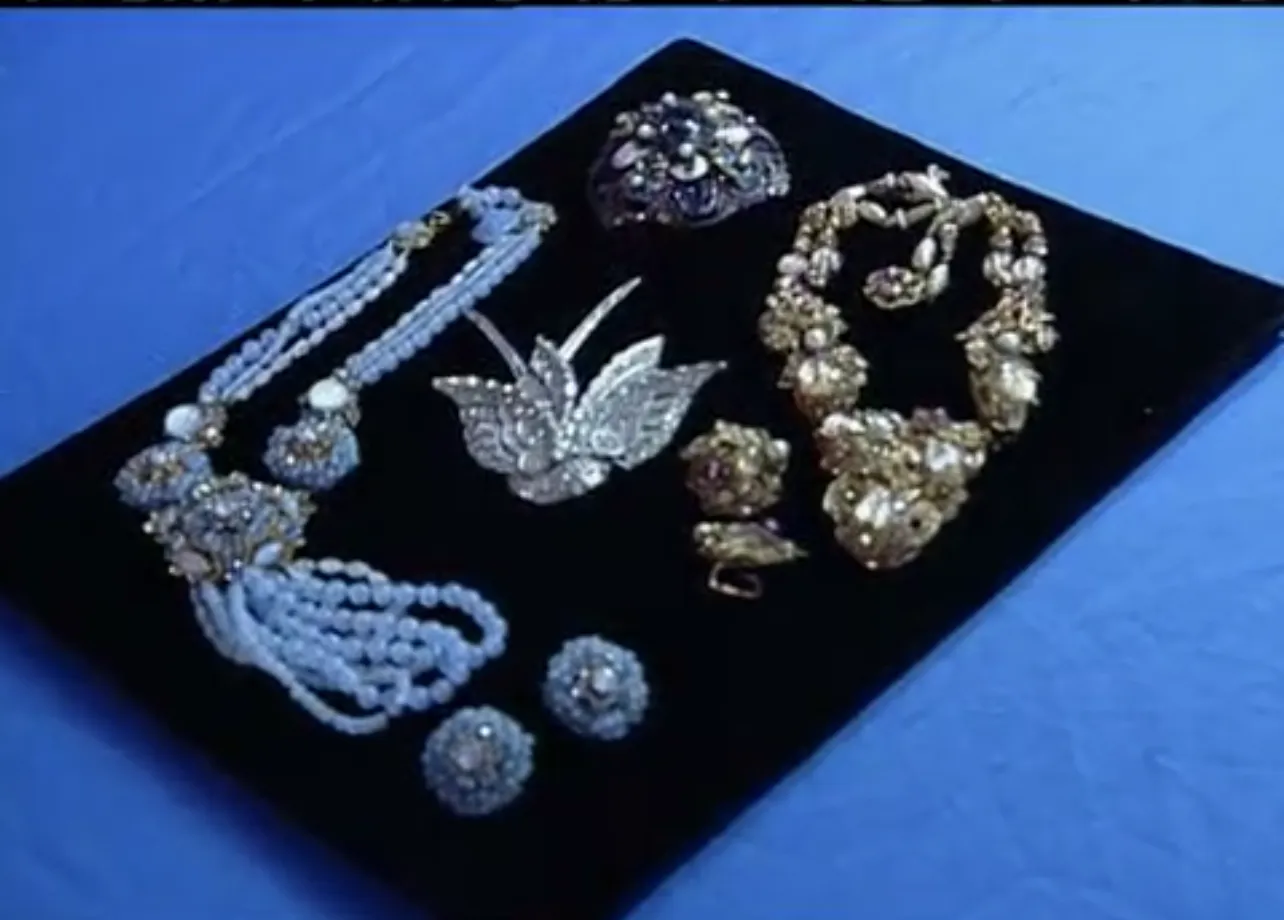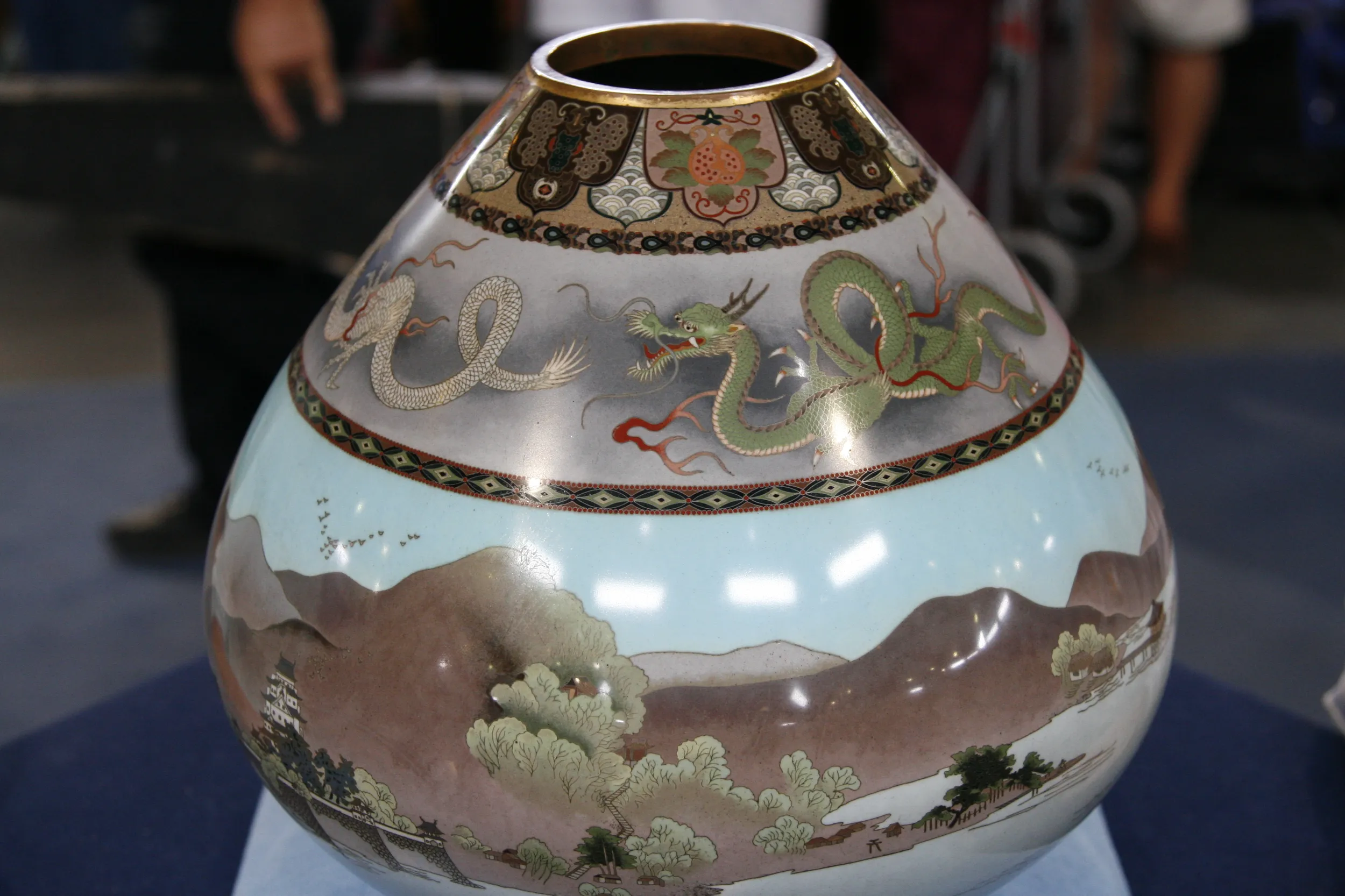GUEST: I was only about six years old in 1930s, and my father was a military officer. And at that point, there was some sort of relationship with the Chinese military, and they sent a, a delegation to Latvia. And as a result, my father ended up with a present from them, and this was their present. Later, in '44, the Soviets came, wartime, and we had to pack up and disappear. And we ended up in Poland, Czechoslovakia, and finally Germany, where we spent four years in a displaced persons' camp before coming to the United States. It's still here. (chuckles) We call it the urn, but we don't know what its purpose ever was.
APPRAISER: The holes here at the top...
GUEST: Yeah.
APPRAISER: Right here, and actually up here, too, although these are not pierced through the body, have a purpose. And that is to let the smoke or
the vapor...
GUEST: Mm-hmm.
APPRAISER: ...rise from the interior.
GUEST: Mm-hmm.
APPRAISER: And there's vapor and there's smoke rising from the interior because this is a censer.
GUEST: Oh, yes.
APPRAISER: And what it was created to do is to have incense burn inside of it with a layer of sand.
GUEST: Mmm.
APPRAISER: You put incense sticks, and the incense smoke would rise through these apertures, and the kind of very complicated interlaced design...
GUEST: Mm-hmm.
APPRAISER: ...here is a mixture of cloud scrolls or smoke swirls...
GUEST: Mm-hmm.
APPRAISER: ...or vapor swirls and vines, and the vines and the tendrils you see echoed here on the cloisonné enamel, which is lotus plants.
GUEST: Mm-hmm.
APPRAISER: And you notice this is stylized water. That's the blue, with a rippling effect of the surface of the water. The idea is that not only is it a
censer where the smoke is rising, because that's burning, but it's also to make you think about the vapor that rises from a lake.
GUEST: Mm-hmm.
APPRAISER: And that comes up rising...
GUEST: (chuckling) Yes.
APPRAISER: ...in the evenings or the mornings, you know.
GUEST: Yeah.
APPRAISER: And it has that wonderful, mysterious aspect. From the Chinese perspective, it carries an essence to another dimension, to Heaven.
GUEST: Mm-hmm.
APPRAISER: And so the prayers that would be granted-- for instance, the desires of the heart...
GUEST: Mm-hmm.
APPRAISER: ...would rise with the vapors to be heard by the heavenly powers. It would have been a part of an altar set. And in all likelihood, this is
part of a larger set.
GUEST: Oh, I see.
APPRAISER: There would have been other pieces, in my opinion, and it's got this marvelous kind of legs that are an elephant's head with this
trunk...
GUEST: Mm-hmm.
APPRAISER: ...that curls down and supports it. From the artistic standpoint, you've got gilded bronze, you have the cloisonné enamel. It's in very good shape here. I can see that there's a stress fracture here at the top of the elephant head.
GUEST: Mm. I see.
APPRAISER: The gilding has been in, kept in great shape. I think it probably dates to the late 18th century, early 19th century, and is emblematic of
the wealth and power of China at that moment.
GUEST: Mm-hmm.
APPRAISER: That was one of the high points of Chinese culture and art, and it shows the esteem, the great esteem, that they had for your dad.
GUEST: Mm-hmm.
APPRAISER: That they gave something like this.
GUEST: Yeah.
APPRAISER: I've seen lots of diplomatic gifts, but rarely do you see something of this kind of importance...
GUEST: Really? Hm.
APPRAISER: ...tied to that kind of spiritual connection. So in an auction setting, this would sell in the range of, I think, $2,000 to $3,000.
GUEST: Okay. It's worth something. (laughs)
APPRAISER: It is worth something. And it certainly was worth the effort that your family took.
GUEST: Yeah.
APPRAISER: Took care of it.
GUEST: Well, we have enjoyed it so much. It's always a centerpiece on our, uh, coffee table.

